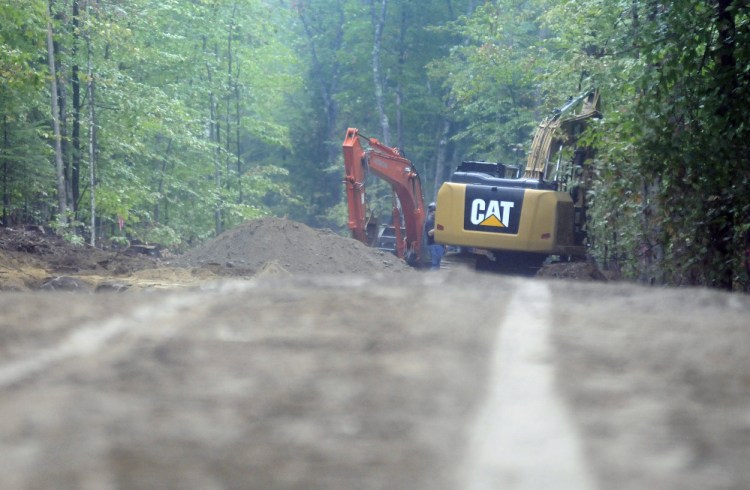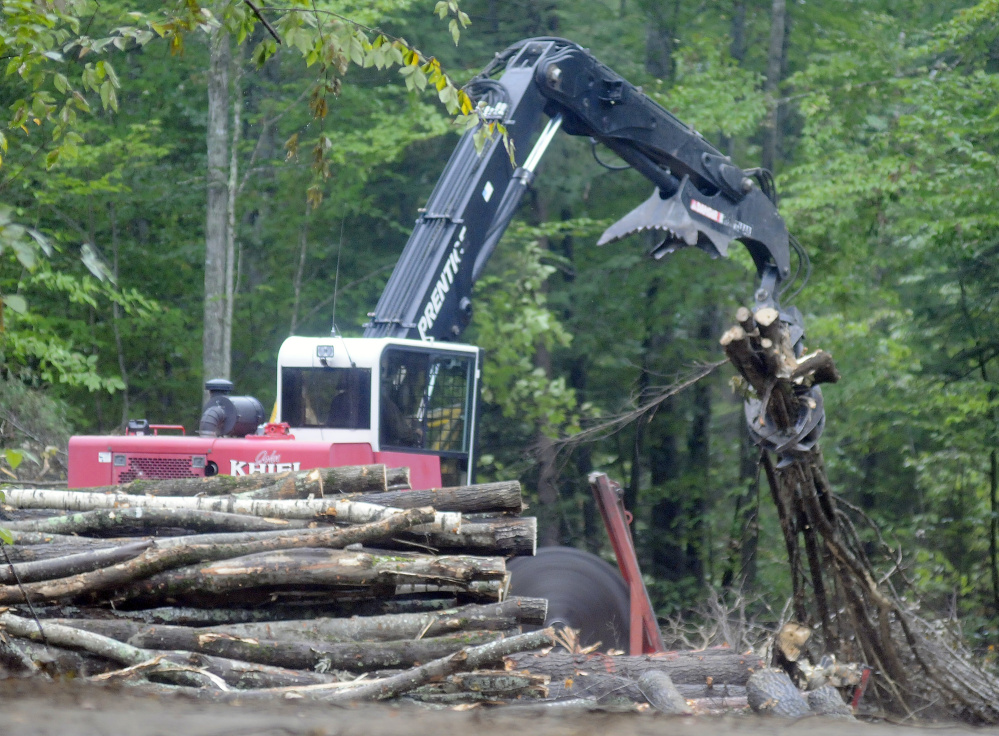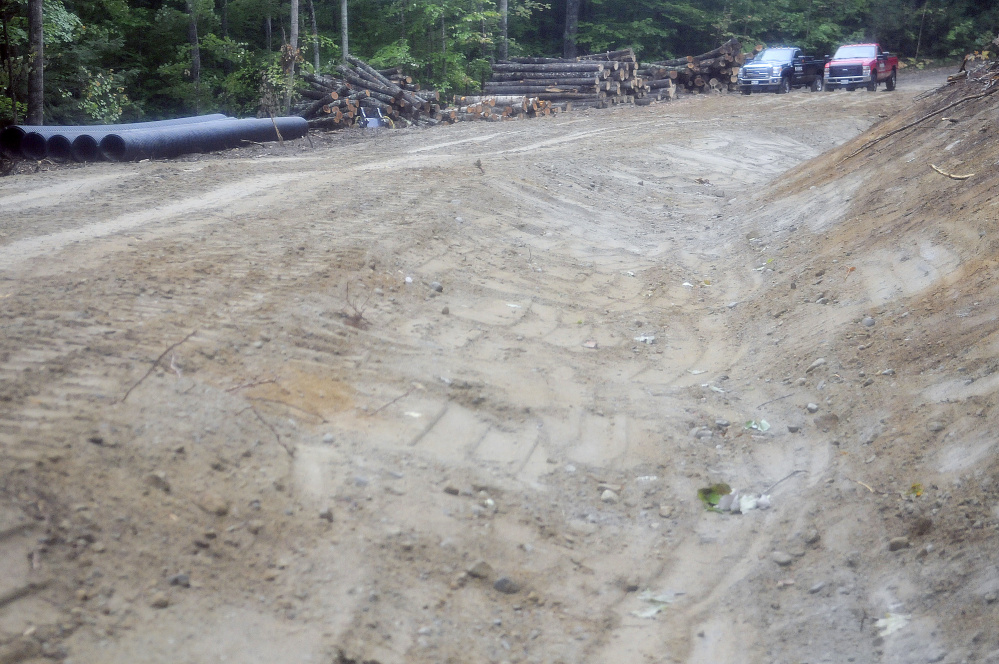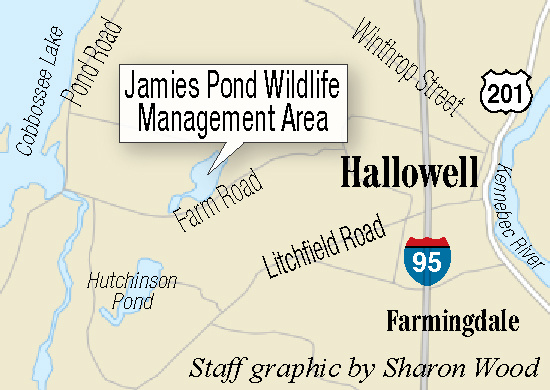Scott Schiff-Slater has been against the timber harvesting project at Jamies Pond Wildlife Management Area since plans were made public several years ago. Now that the project has started, Schiff-Slater continues to voice his displeasure to state officials while understanding it might be all for naught.
“It is an amazingly special and beautiful place, but it’s state owned land, so it’s our land,” Schiff-Slater said.
Last month, the Department of Inland Fisheries and Wildlife started the project at the approximately 1,000-acre property in Hallowell, Farmingdale and Manchester. It’s the first timber harvesting project at Jamies Pond in more than 10 years.
Eric Hoar, a lands management biologist and the timber harvest’s project manager, said things are going well so far on the property.
“It’s been like any other job and seems like it’s business as usual,” Hoar said. “Everything is pretty much going according to the plan that we talked about during the public meetings.”
Hoar said the department is keeping its website updated with a map of the operating area, and trails are marked with signs so that people know when they are approaching an area where work is taking place.
The project includes the removal of certain trees to allow other, younger trees to flourish, thus increasing foraging opportunities for deer, snowshoe hare and turkey, and work on a deer wintering area to increase browse, and patch openings in aspen-dominated areas to provide habitat for both grouse and woodcock. The agency is also constructing roads for vehicles and equipment that are temporary for use but essentially permanent by footprint, Hoar said.
Following the work, the new roads will be closed, but the agency expects to use them when it re-enters Jamies Pond in 15-20 years, Hoar said. The width of the road is such that it allows for ditches with modestly sloped sides which won’t collapse or erode over time, and the width of the right-of-way facilitates drying, which also reduces or eliminates erosion.
Hoar said new roads, like a recent harvest, look quite raw because the sides haven’t turned green, there is disturbed soil and the crowns of the trees haven’t filled in. Once the road construction is complete, it will be seeded with a conservation seed mix to further stabilize the soil.
Schiff-Slater, a family doctor in Hallowell, thinks too many trees are being cut and thinks the project is “stunningly wrong, shortsighted and misguided.”
“There is very little areas of old growth around the state,” Schiff-Slater said. “Having small parcels of old growth available to the public so we can see what it’s like when it’s left alone is incredibly important and valuable.”
Schiff-Slater acknowledged that the harvesting project is legal, but he thinks it’s “stunningly wrong.”
The wildlife agency said harvesting activity would occur on about 70 percent of the property, but that doesn’t mean they plan to cut 70 percent of the forest. In fact, officials say only 30 percent of the trees at Jamies Pond will be harvested, and Hoar said this is “right on target” with other harvesting projects.
That type of harvest is typical at wildlife management areas around the state, Hoar said. People in the wildlife management business need to be able to not just see the immediate future, but also 10, 15 or 20 years out.
But Schiff-Slater and many other people he’s spoken to think the project will cut too many trees. He thinks the trees shouldn’t be cut at all, but knowing that isn’t possible, he wondered why the officials weren’t open to a dialogue on the scope of the harvest.
“The whole reason our government is a mess right now is there are people on one side and the other, but there’s no compromise,” Schiff-Slater said. “We have similar interests, but we have different views, so let’s have a middle ground.”
Schiff-Slater believes the department and agency officials have not listened to the public’s concerns regarding the timber harvest project at Jamies Pond.
Wildlife Commissioner Chandler Woodcock, who wasn’t available to comment Monday, responded in an email to Schiff-Slater that the department received many opinions and viewpoints on the project.
“The vast majority of viewpoints we have received have strongly supported these habitat improvement efforts,” Woodcock wrote earlier this month. At the request of the public, Woodcock said, Jamies Pond will remain open throughout the project, which will “result in a longer and less efficient operating period.”
Wildlife officials held a well-attended site walk at Jamies Pond and an at times lively informational meeting in Hallowell in late June to discuss the project.
G. Keel Kemper, a regional wildlife biologist for the agency, told the people in attendance at both events that it’s not the agency’s intention to disrupt the management area’s vast and expansive trail system.
Schiff-Slater said he has friends and family wondering why he is continuing to bother to express his concerns to the wildlife department, especially now that the project is well underway. He said he’s willing to put himself out on the line to take a stand against something he believes is wrong.
“My real goal would be to see if they could slow down the harvest and re-evaluate it, but I’m not hopeful of that,” Schiff-Slater said. “At least I will feel that I did everything I could to protect this place. I need to feel that for myself.”
He has been visiting Jamies Pond for more than 20 years, though he hasn’t been there as much lately for walks or hikes.
“I’ve just kind of avoided it because it gets me so agitated that it destroys the purpose of the walk,” Schiff-Slater said. “I’ve been walking along the lake, where they’re not going to cut as much, but it’s a nightmare and it takes me like two days (to get over it).”
Hoar said he hopes to be able to take Schiff-Slater on a tour of the work area because it would be “an opportunity to speak more to the long-term benefits of the project.”
About 70 percent of the land the wildlife agency manages is near the coast, which means it’s near the state’s population centers, Hoar said. He expects to encounter more adversity as more projects are announced.
“We’re trying to do more outreach and more demonstration areas, and we’ll continue to try and reach folks any way we can,” Hoar said.
Jason Pafundi — 621-5663
Twitter: @jasonpafundiKJ
Copy the Story Link
Send questions/comments to the editors.







Success. Please wait for the page to reload. If the page does not reload within 5 seconds, please refresh the page.
Enter your email and password to access comments.
Hi, to comment on stories you must . This profile is in addition to your subscription and website login.
Already have a commenting profile? .
Invalid username/password.
Please check your email to confirm and complete your registration.
Only subscribers are eligible to post comments. Please subscribe or login first for digital access. Here’s why.
Use the form below to reset your password. When you've submitted your account email, we will send an email with a reset code.